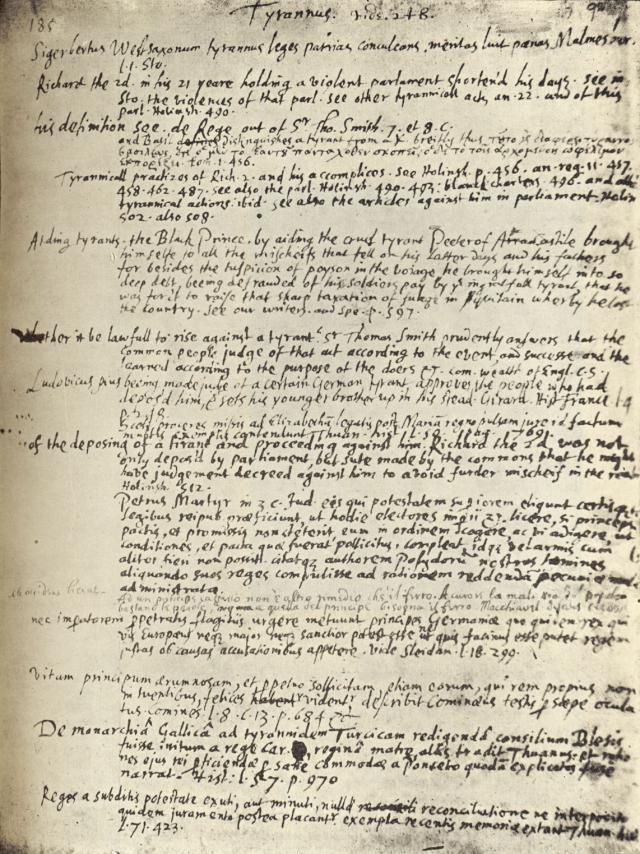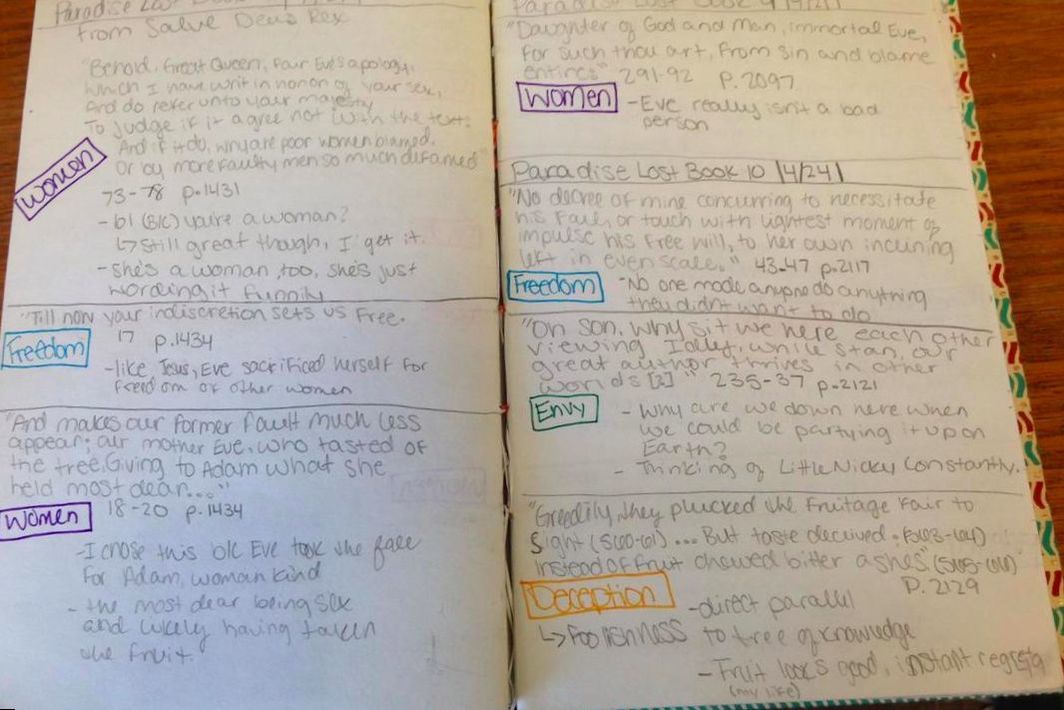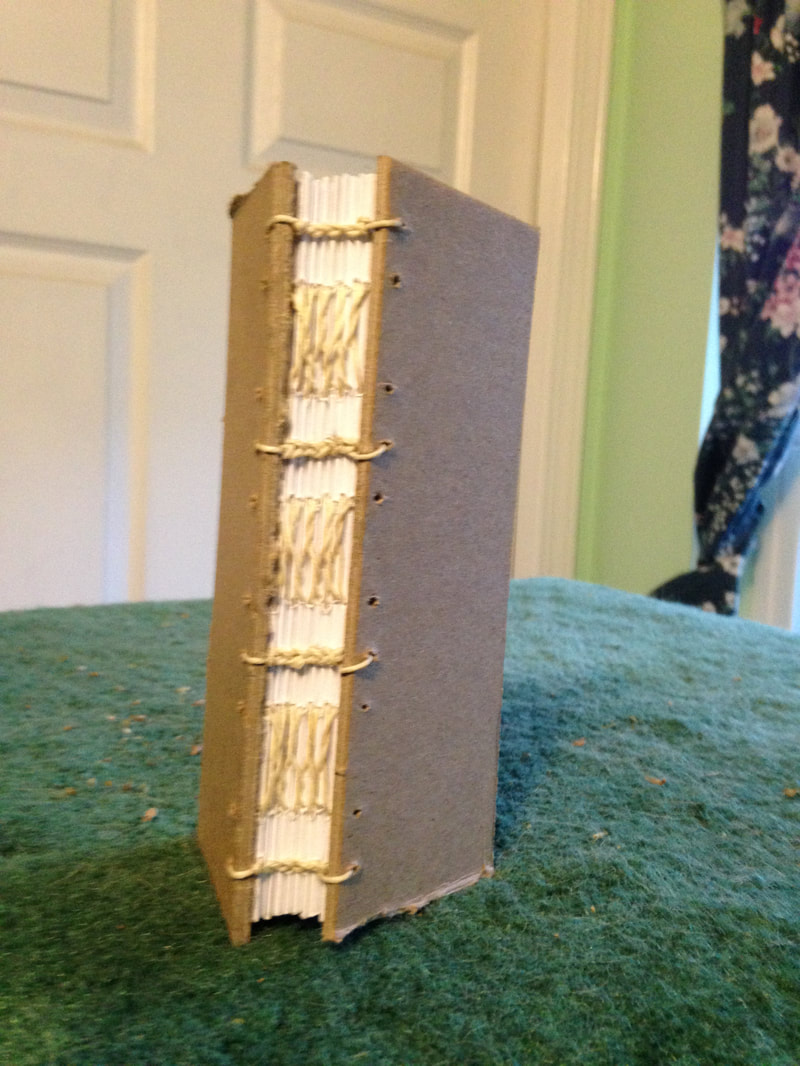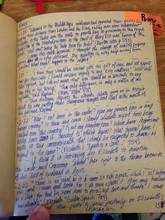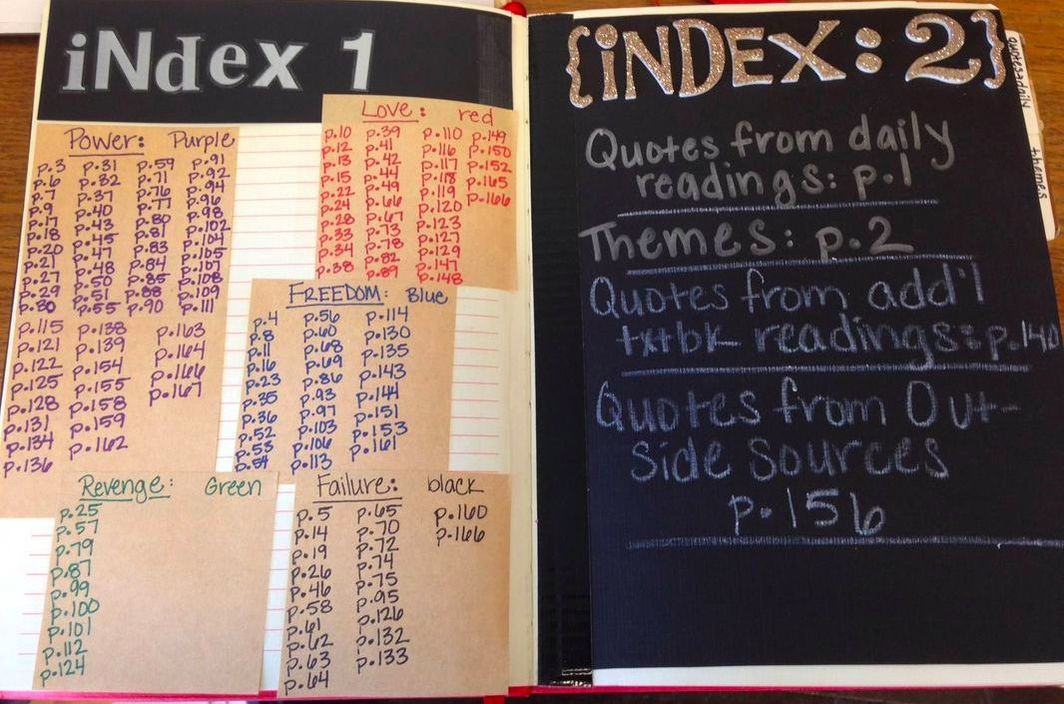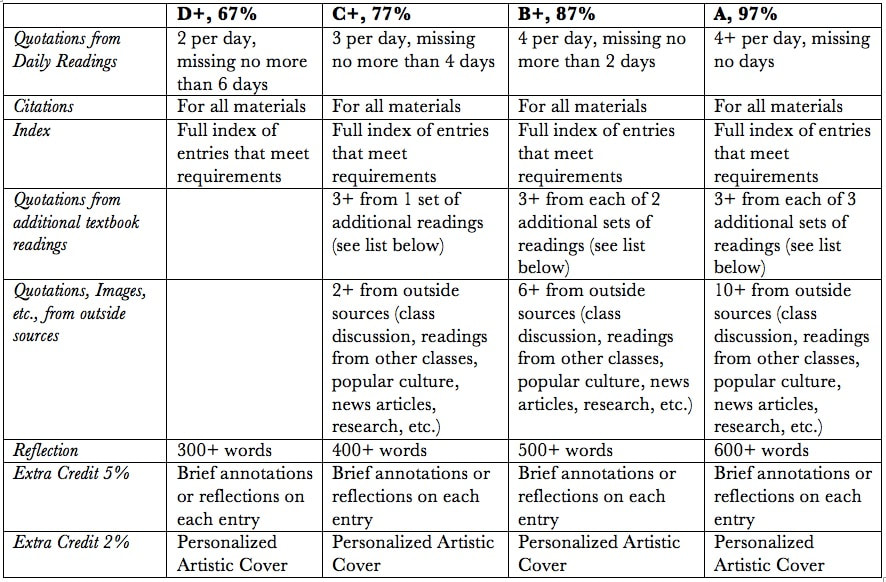Patricia R. Taylor
Assignment Background
|
During the sixteenth and seventeenth centuries, one of the most important tools of a writer was a commonplace book (or CPB), though the practice continued long after the early modern period. A CPB would start as a blank book, and readers would then collect “‘commonplaces’ or passages important for reference” under a variety of subject headings (OED, s.v. “commonplace book”). CPBs were something like diaries or journals, but instead of recording the events of the day or one’s emotions or feelings, they served as places to record quotations or summaries of information that one might use in future writings, along with reflections on those quotations and information. Famous people who have kept such books included Francis Bacon, John Milton, Thomas Jefferson, John Hancock, Mark Twain, Charles Darwin, and Virginia Woolf.
Robert Darnton writes in the New York Review of Books (Dec. 21, 2000) that commonplace books both required and encouraged forms of reading that are different from most modern practices: Unlike modern readers, who follow the flow of a narrative from beginning to end, early modern Englishmen read in fits and starts and jumped from book to book. They broke texts into fragments and assembled them into new patterns by transcribing them in different sections of their notebooks. Then they reread the copies and rearranged the patterns while adding more excerpts. Reading and writing were therefore inseparable activities. They belonged to a continuous effort to make sense of things, for the world was full of signs: you could read your way through it; and by keeping an account of your readings, you made a book of your own, one stamped with your personality. (47.20) |
A page from John Milton's Commonplace Book. Source: The Getty.
|
This assignment asks you to experiment with this early modern reading and composition behaviors. You will develop collections of passages related to topics that may be useful to your research project, or to your understanding of the work of our class as a whole.
|
Skills you will develop with this assignment:
Knowledge you will develop:
|
Page from a student commonplace book, Spring 2017.
|
Prompt
Keep a commonplace book modeled on the early modern practice of reading and recording quotations. Each author kept track of topics of interest to them; the content might differ from reader to reader, though there were standard terms. For this assignment, you will keep track of at least 5 different topics chosen from the list below that you are particularly interested in. Most students find that they add additional topics as they encounter or become interested in them over the course of the semester. Ultimately, one of these topics will likely become the subject of your research paper, so some level of variety could be important.
Keep a commonplace book modeled on the early modern practice of reading and recording quotations. Each author kept track of topics of interest to them; the content might differ from reader to reader, though there were standard terms. For this assignment, you will keep track of at least 5 different topics chosen from the list below that you are particularly interested in. Most students find that they add additional topics as they encounter or become interested in them over the course of the semester. Ultimately, one of these topics will likely become the subject of your research paper, so some level of variety could be important.
|
Power
Tyranny Justice Corruption Death Grace/mercy Nature |
Faith
God Freedom Love Women Sex Imitation |
Friendship
Loyalty Ambition Jealousy Church Honor Revenge |
Failure
Time Prayer Knowledge Truth Language Poetry |
Directions
|
Start by purchasing a blank book that you can use as a commonplace book. I recommend something relatively small; most students in past classes have preferred 5x9. You may want it to be completely blank, or you might want it lined or with graph paper. Some students prefer spiral bound books; others like hard bound or paper back. A few choose mini 3-ring binders. Some even make their own books, like the coptic-stitch book to the right. For those of you who are not so ambitious, I recommended Paperblanks or Moleskins, but there are plenty of other blank books producers out there.
|
Decide if you plan to organize your book topically or chronologically. If you organize topically, you will need to create different sections of your notebook dedicated to different topics. Chronological organization will require more careful noting of topics for each quotation.
|
You will need to keep an index of your book, either at the front or back.
|
Grading Contract
This assignment is graded on a contract basis. This means that you must fulfill all the requirements to be eligible for a particular grade. You will receive the highest grade for which you have completed all the requirements. More detail on individual requirements is available below the chart.
Quotations from Daily Readings: For each class, record quotations from each day’s readings, providing citations (author, title, and page or line numbers). Aim for four or more quotations each day if you want to earn an A or B; 3 if you want to earn a C; 2 if you want to earn a D. Transcribing a whole poem (10 lines or more), can count as two quotations.
Quotations from Additional Textbook Readings: You will also need to read additional sets of texts (1 for a C, 2 for a B, 3 for an A) from the following list that we are not reading as a class, and record quotations from them. Most readings are about 10 pages long, though a few are shorter or longer. Remember to read the introduction to the author or text before starting the text; these introductions will provide crucial contextual information.
Outside Sources: Over the course of the semester, keep an eye out for quotations, images, or other materials you can include that come from outside our course readings—they might be from class discussion, readings from other courses, research, news articles, memes, artwork, images from popular culture, etc. To earn an A, you will need quotations from at least 10 such outside sources.
Reflection: At the end of the semester, you will write a reflection on keeping your commonplace book. You should talk about what you have learned from keeping the book and what you learn upon going back over the book once it is complete. What benefit was there for you in keeping a commonplace book? What did you learn to see in the texts we read that you might not have if you had not kept one? Please be as specific in your examples as possible—quoting from your CPB is much appreciated.
- Extra Credit: You can earn up to 5% extra credit if you write brief annotations explaining why you chose each quotation—was it amusing, thought provoking, infuriating? Did it echo or contradict another quotation? Did you have a question about the quotation? Annotations need not be fully written--they can also be drawings, diagrams, etc.
Quotations from Additional Textbook Readings: You will also need to read additional sets of texts (1 for a C, 2 for a B, 3 for an A) from the following list that we are not reading as a class, and record quotations from them. Most readings are about 10 pages long, though a few are shorter or longer. Remember to read the introduction to the author or text before starting the text; these introductions will provide crucial contextual information.
- Henry Howard, Earl of Surrey, poems (661-671)
- Sir Thomas Hoby, translation of Castiglione’s The Courtier (704-721)
- Edmund Spenser, “Epithalamion” (990-1000)
- John Donne, “The Canonization” (1377), “Air and Angels” (1380), “A Valediction: Of Weeping” (1381), “A Valediction: Forbidding Mourning” (1385), “A Hymn to Christ, at the Author’s Last Going into Germany” (1416), “Hymn to God My God, in My Sickness” (1417), “A Hymn to God the Father” (1418)
- Ben Jonson, Epigrams (1439-1446)
- Mary Wroth, “Pamphilia to Amphilanthus” (1566-1571)
- Francis Bacon, Essays (1662-1674)
- Thomas Browne, Religio Medici (1696-1705)
- Henry Vaughan, Silex Scintillans (1728-1740)
- Richard Crashaw, Steps to the Temple (1745-47) and Carmen Deo Nostro (1747-1756)
Outside Sources: Over the course of the semester, keep an eye out for quotations, images, or other materials you can include that come from outside our course readings—they might be from class discussion, readings from other courses, research, news articles, memes, artwork, images from popular culture, etc. To earn an A, you will need quotations from at least 10 such outside sources.
Reflection: At the end of the semester, you will write a reflection on keeping your commonplace book. You should talk about what you have learned from keeping the book and what you learn upon going back over the book once it is complete. What benefit was there for you in keeping a commonplace book? What did you learn to see in the texts we read that you might not have if you had not kept one? Please be as specific in your examples as possible—quoting from your CPB is much appreciated.
Proudly powered by Weebly
